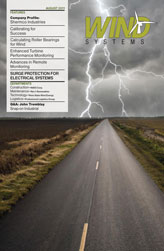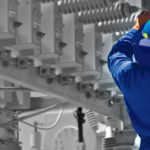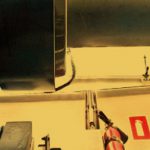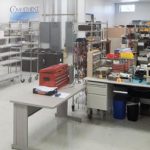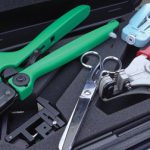Roller bearings are essential parts in most devices and machines whose primary function is to transmit power and motion. They support the rotating parts within the stationary ones, and thus providing basic functionality in the machine. From the point of view of classical machine design, roller bearings are just another machine element that needs to be chosen according to the operating conditions, yet they offer a potential for stand-alone study and investigation.
Since bearings are tightly integrated into the functionality of the machine in which they operate, any improvement in the bearing operating conditions has a direct impact on the machine itself, its life cycle cost, and also in the environment. Design techniques that reduce the friction torque or roller losses of the bearing lead to improved efficiency, and advanced manufacturing processes and materials provide bearings with increased service life while simultaneously reducing the environmental footprint associated with manufacturing and recycling [1]. Additionally, life cycle cost analysis indicates that the largest part of costs associated with the operation of a machine is ownership costs, in contrast to acquisition or disposal costs [2]. Unscheduled maintenance costs are an integral part of ownership costs, and an adequate service life of the building blocks of the running machine is easily justifiable. Standstill costs due to faulty or overloaded bearings should therefore be avoided.
In this article we are mainly interested in the service life of roller bearings, pertaining to advanced calculations based on the knowledge of their inner geometry as defined in international standards. Predicting service life within an application-dependent accuracy is a major factor in a successful machine design.
Service Life Calculation
The notion of bearing service life is statistical in its meaning, and its origins can be traced back to the Lundberg-Palmgreen theory [3]. It is statistically determined that in a population of identical bearings which experience the same operating conditions (temperature, loading, speed, and lubrication), the number of bearings in that population which survive after a given service duration depends on the extent of this duration. The service life in which 90 percent of the bearings survive is termed the basic rating life L10 and is generally given by bearing manufacturers. The higher the rating life, the more reliable a single bearing in operation will be in fulfilling its service requirements.
Until recently, the standard way to calculate the rating life of a bearing was based on ISO 281 [4]. The basic idea behind this method is to calculate, based on the actual radial and axial load, an equivalent load depending on the bearing type (radial or axial). The rating life is then calculated as

where i=r for radial bearings and i=a for axial bearings, Ci is the basic dynamic load rating, Pi is the dynamic equivalent load and n=3 for ball bearings and n=10/3 for roller bearings. The basic dynamic load rating is given by the manufacturer, but can also be calculated according to the formulas given in [4] when the bearing geometry is known.
This method of calculation cannot cope with general loading conditions, bearing ring misalignments, or clearance in the bearing. Therefore, there is an increasing trend in using information of the inner geometry of the bearing, according to [5]. Due to the fact that these methods are computationally intense, the engineering practice is the use of specialized computer software such as the KISSsoft calculation program [6].
The basic principle described in the ISO/TS 16281 [5] is the complete analysis of the internal loading on each roller element, taking into account the inner geometry of the bearing, tilting, and/or misalignment and internal clearance. The rating life, calculated in accordance to [5], is termed reference rating life L10r. The contacts between the roller element and the raceways in ball bearings are treated as point contacts, whereas in roller bearings as line contacts (Figure 1).
There are several factors that influence the reference rating life of a bearing. For a given external loading condition, the Hertzian pressure on the roller element contact surface is greatly affected by the cross-sectional raceway groove radius of the rings (for balls bearings) and the roller profile (for roller bearings). In general, increased Hertzian pressure leads to reduced service life. Any factor which affects diametral clearance—be it a press fit of the bearing on the shaft and/or housing, increased operating temperature and thus thermal expansion, or local deformations of rings as according to housing deformations—has a direct effect on the internal loading distribution, and therefore on the service life. Lubrication conditions and the potentially different reliability are encapsulated in the ISO life modification factor aISO and the life modification factor for reliability a1 [4]. The modified reference rating life is thus given as

Industrial Application
It is helpful to illustrate how the above notions are used in industrial applications. For this purpose we use a typical case from the wind energy sector, as seen in Figure 2. It is a 2MW wind turbine shaft, rotating at 1750 RPM. Two cylindrical bearings are used to bear the significant radial load, and a deep groove bearing for any thrust component. The coupling of the shaft to the turbine blades on the right and the driven spur gear (220 mm pitch diameter) on the left are clearly visible. In the ideal situation, in which the bearings sit perfectly on their rigid housing, the modified reference service life of the critical radial bearings is around 99’000 h for the left one, and 736’600 h for the right one. Figure 3
The high service life of the right bearing is to be attributed to perfect loading conditions, which are rarely true in real-life applications. Manufacturing errors and deformations due to loading or assembly can cause the housing structure to diverge from its perfect theoretical alignment. This has a direct influence on the outer ring of the bearing, and the subsequent development of increased contact pressure between the roller bodies and the raceways. The deformation of the housing could be modeled as a misalignment error of the bearing outer ring. A small error of 0.3° loads the roller elements eccentrically and high contact pressures are developed. As a consequence, the bearing’s modified reference service life is drastically reduced to around 8’280 h. Table 1
If such misalignment errors can’t be avoided, a potential corrective action could be to manufacture the roller elements with an optimal profiling for that case. For the sake of simplicity and illustration we present the results of non-symmetrically profiled rollers, in which the left half of the roller employs a standard logarithmic profiling while the right half employs a profile value which is double that of the logarithmic one. The new pressure distribution is shown in Figure 4, where it is clear that the pressure peaks have been eliminated. In this case, the bearing life has been increased to around 26’200 h. The increased manufacturing costs of custom roller profiling could be balanced by the savings in maintenance work, related to the replacement of the short-lived bearing, and in any case the cost-benefit analysis is highly application-dependent.
Conclusion
Modern wind power plants need to achieve long service life with minor maintenance expense. Operation and maintenance can be accurately calculable, and with reliable calculation software, the chance of loss of bearings can be drastically minimized beforehand. With the implementation of the calculation method ISO/TS 16281 considering the aspect of service life, KISSsoft provides close-to-reality prognoses about future behavior, required stability, and service life of a gearbox.
References:
1) Roller Bearing Contribute to the Environment”, Japan Bearing Association, Global environment committee.
2) “A Life Cycle Cost Calculation and Management System for Machine Tools”, Rafael Enparantza, Oscar Azkarate, Jose Zendoia, Proceedings of the 13th CIRP International Conference on Life Cycle Engineering, 2006.
3) “Roller Bearing Analysis”, Tedric A. Harris, John Wiley & Sons, Inc. 2001.
4) ISO 281, Roller bearings – Dynamic load ratings and rating life, 2007.
5) ISO/TS 16281, Roller bearings – Methods for calculating the modified reference rating life for universally loaded bearings, 2008.
6) KISSsoft, Calculation programs for machine design, www.kisssoft.ag.



















